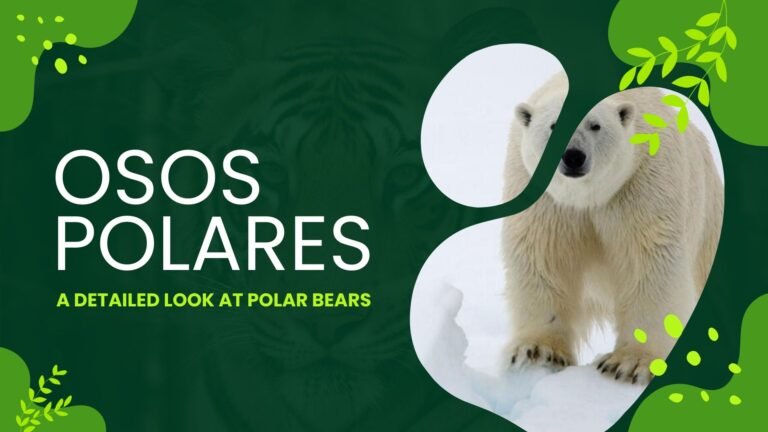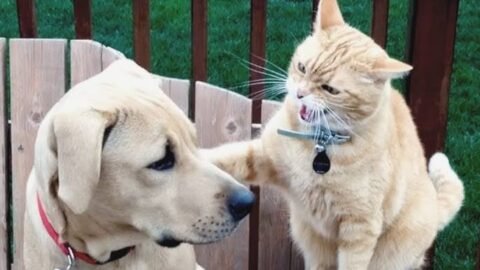Osos polares, more commonly known as polar bears, are majestic creatures that inhabit the Arctic region. These beautiful animals are perfectly adapted to their icy environment, with their thick fur, large paws, and excellent swimming abilities. In this blog post, we will take a detailed look at the biology, diet, reproduction, social behavior, threats, and conservation efforts surrounding osos polares.
Understanding the Biology of Osos Polares
Polar bears, or osos polares, stand as the apex predators of the Arctic, embodying strength, endurance, and adaptability in their harsh environment. These magnificent creatures have evolved a series of remarkable biological adaptations that enable them to survive and thrive in one of the earth’s most extreme habitats. Their fur, appearing white and blending seamlessly with the surrounding ice and snow, is actually translucent. Each hair is a hollow tube, which traps air and provides insulation, while also helping with buoyancy in water. This unique fur works in tandem with a dense layer of fat, up to 4 inches thick, that further insulates them from the freezing temperatures.
Underneath their skin, osos polares have a black dermis, a dark coloration that aids in absorbing sunlight to keep them warm. Their eyes are adapted to both the glaring reflection of the sun on the snow and the dim light conditions of the Arctic winter. They possess a nictitating membrane, which acts like sunglasses to reduce glare and protect their vision while hunting.
The physical stature of polar bears is imposing, with large, powerful limbs and a strong, muscular body designed for long-distance swimming and navigating the icy terrain. Their front paws are large and oar-like, facilitating efficient swimming over vast stretches of open water — essential for pursuing seals, their primary prey. The pads of their paws are covered in small bumps, known as papillae, which along with their sharp claws, provide traction on the slippery ice.
These biological traits of osos polares underscore their mastery over the Arctic environment, revealing a complex interplay of adaptations that have allowed these iconic animals to become the dominant carnivores of the ice-covered north.
The Diet and Hunting Methods of Polar Bears
Osos polares rely on a highly specialized diet primarily consisting of seals, which provide the fat and energy necessary to survive the Arctic’s unforgiving climate. These apex predators demonstrate remarkable hunting skills that are finely tuned to their icy habitat. Their primary targets are ringed and bearded seals, although their diet can also include walrus, beluga whale carcasses, and, on rare occasions, seabirds.
To catch their prey, polar bears employ a technique known as still-hunting. They possess an extraordinary sense of smell, enabling them to detect seals nearly a mile away and beneath several feet of compacted snow and ice. Once they locate a seal’s breathing hole, polar bears will patiently wait, sometimes for hours, camouflaged by the snow, until a seal emerges to breathe. In a display of power and precision, the bear will strike swiftly, using its massive forepaws to pull the seal out of the water.
During the summer months, when the ice melts and seals become more difficult to hunt, osos polares may scavenge for alternative food sources on land, including eggs, vegetation, and carcasses left behind by other animals. This adaptability in their diet is crucial for their survival during times when their primary food sources are less accessible. Despite their adaptability, the success of their hunting efforts is highly dependent on the presence of sea ice, making them vulnerable to the effects of climate change and the resulting habitat loss.
Reproduction and Lifecycle of Polar Bears
The reproductive cycle of osos polares is both fascinating and unique, crucial to the survival of this iconic species. Mating typically occurs from April to May, but the development of the fertilized egg temporarily pauses, resuming several months later in a process known as delayed implantation. This adaptation ensures that the birth of the cubs aligns with the best possible conditions for their survival, usually between November and January. The timing allows mother bears to conserve energy and increase the chances of their cubs’ survival in the harsh Arctic winter.
During the gestation period, the pregnant female digs a maternity den in the snow, often on a snow-covered slope or bank. These dens serve as a warm, safe environment for the birth and early care of the cubs. Newborn polar bear cubs are incredibly small, weighing a little more than a pound, and are highly dependent on their mother. They are born with a thin layer of fur and are blind, making the warmth and protection of the den and the mother’s care critical for their initial survival.
For about two to three months, the family remains in the den, with the mother not eating but relying on her fat reserves for milk production. As spring arrives and the outside temperature becomes milder, the mother and her cubs emerge from the den. The cubs, now stronger and more robust, follow their mother closely, learning to hunt and navigate the complex Arctic terrain. This period of learning and growth is vital, setting the foundation for their future independence.
The Social Behavior of Osos Polares
Unlike many mammalian species that form complex social structures, polar bears are known for their predominantly solitary nature. The vast and desolate Arctic does not foster conditions that necessitate or particularly benefit from group living, hence osos polares spend the majority of their time alone, navigating the ice in search of food. This isolation changes briefly during the breeding season when males and females pair for a short period to mate. After mating, they go their separate ways, with the female shouldering the responsibility of raising any offspring.
Polar bear mothers exhibit an exceptionally strong bond with their cubs, displaying levels of care and protection that underscore the species’ more subtle social capabilities. Cubs stay with their mothers for up to two and a half years, during which they learn essential survival skills. The learning process involves following their mother closely, observing her hunting techniques, and learning to navigate the treacherous ice.
Interactions outside of mating and maternal care are rare but not unheard of. On occasion, when the opportunity arises, such as an abundant food source, polar bears may gather in small, temporary groups. During these gatherings, behaviors observed include tolerance of close proximity to one another and even instances of play among younger bears or between adults and cubs. Such interactions, though not common, provide valuable insights into the complex behaviors and social dynamics of these majestic Arctic dwellers, revealing a side to their nature that goes beyond mere survival.
Threats Facing Polar Bears in a Warming World
The ongoing impact of climate change on the Arctic environment is undeniably altering the landscape on which osos polares depend. The rapid melting of sea ice, crucial for their survival, stands as a formidable challenge, profoundly influencing their ability to access their primary food sources. This environmental upheaval forces polar bears to embark on longer and more treacherous journeys, exposing them to increased risks and energy expenditures with less assurance of successful hunting.
Another critical concern is the thinning ice, which not only affects the bears’ hunting efficacy but also their capacity to reproduce and rear cubs in a secure environment. Habitats once deemed suitable for denning are now less reliable, posing additional threats to cub survival rates. The degradation of their environment leads to more polar bears venturing closer to human settlements in search of food, escalating the likelihood of human-bear conflicts. These encounters not only pose risks to both parties but often result in lethal outcomes for the bears.
The interplay of shrinking ice, diminishing prey availability, and the encroachment of human activity creates a trifecta of threats that jeopardize the future of osos polares. As these majestic creatures navigate an increasingly inhospitable world, the urgency for decisive and effective conservation measures has never been more critical.
Conservation Efforts to Protect Osos Polares
In the face of escalating challenges posed by climate change, concerted efforts are being made to safeguard osos polares and their diminishing Arctic habitat. Conservation organizations globally are spearheading initiatives aimed at understanding and mitigating the impacts of environmental change on these majestic creatures. Key strategies include the meticulous monitoring of polar bear populations and in-depth research into their ecology to inform and craft effective conservation policies. A significant focus is also placed on the promotion of policies aimed at curtailing greenhouse gas emissions, addressing the root cause of global warming and the resultant loss of sea ice habitat critical for polar bears’ survival. Alongside these broader environmental initiatives, there is an emphasis on promoting responsible tourism practices in the Arctic, ensuring that human activities do not further endanger polar bears. Sustainable hunting quotas are also advocated to maintain balance in local ecosystems, allowing polar bear populations to remain stable. These comprehensive conservation efforts are vital in ensuring the long-term survival of osos polares, enabling them to continue to roam the Arctic landscape for future generations to witness and admire.

Daniel J. Morgan is the founder of Invidiata Magazine, a premier publication showcasing luxury living, arts, and culture. With a passion for excellence, Daniel has established the magazine as a beacon of sophistication and refinement, captivating discerning audiences worldwide.





